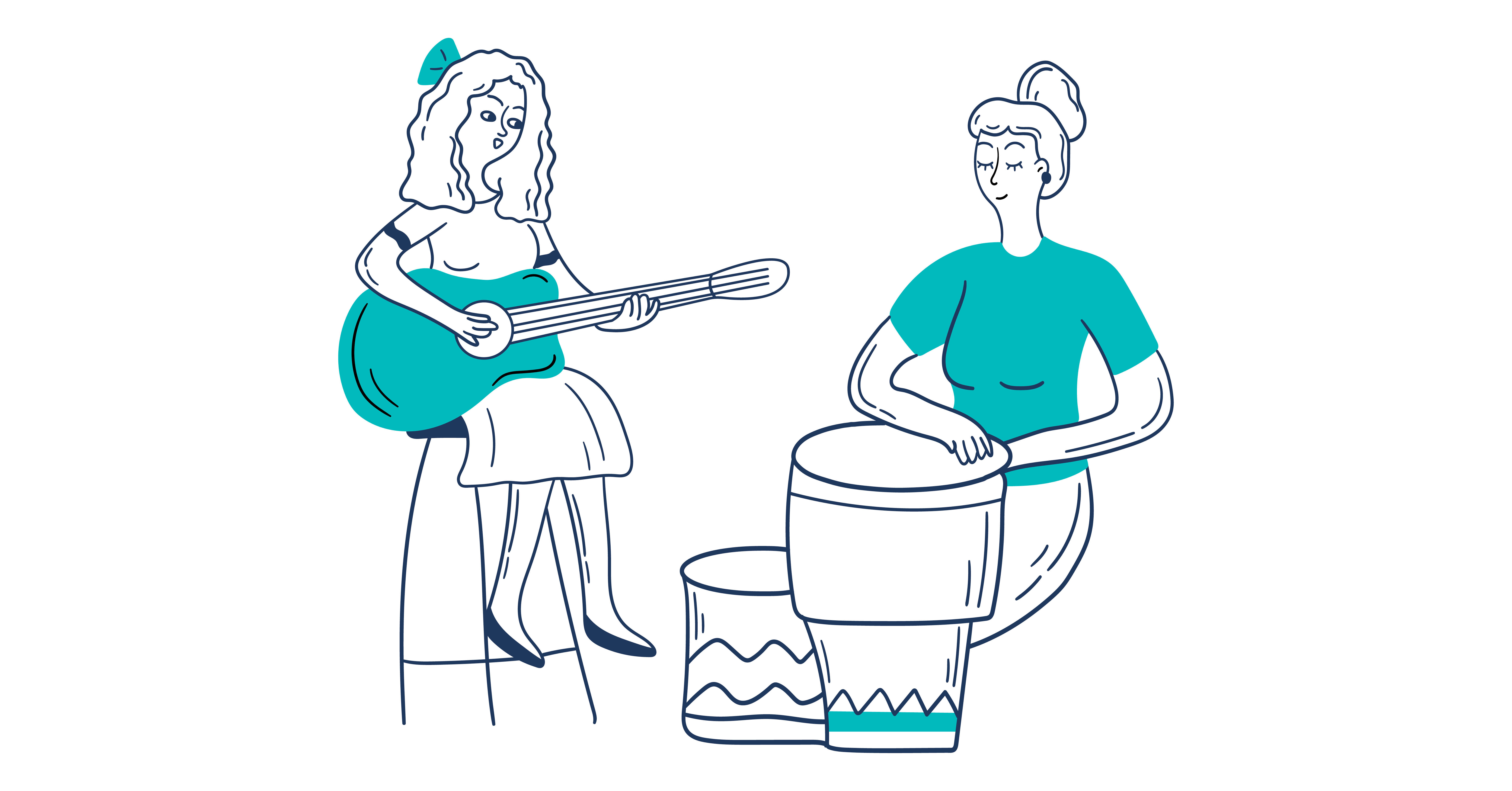How to translate music idioms
Found in all languages, idioms inspired by the world of music contribute to a richer and more expressive vocabulary. There are plenty examples to choose from. In Italian, for instance, “fare la prima viola” (“to play the first viola”) means you’re the one calling the shots. For the English and German equivalents, you just switch your viola for a fiddle. Another example: In German, if you want to refer to a bad situation that just keeps happening (“the same old story”), you’ll have to grab a lyre to sing your sorrows: “Immer die alte Leier!” (“always the old lyre”).
In this blog post, we’ll look at the meanings of some fun musical turns of phrase and shed light on their origins. More importantly from our perspective, however, we’ll be examining how to translate such idioms into another language.
This can be a challenging task, especially when an idiom is specific to a certain culture. Working word for word just won’t cut it, as the figurative meaning is usually worlds apart from any literal translation. So, how do translators manage to hit the right note?
A brief idiomatic repertoire
Hailed by many as the language of love, it’s no wonder that French can make the heart of your beloved “battre la chamade” – meaning they make your heart beat faster. Back in the day, the “chamade” referred to the loud drum call on the battlefield signalling an intention to surrender. Nowadays, hardly anyone still knows what a “chamade” truly is, but the expression remains very much part of everyday language.
Since we’re talking music, it’s only fair we look at the paper on which the notes are written. “Être réglé comme du papier à musique” (literally meaning “adjusted like music paper”) describes something that is very well organised, or someone who keeps to a very strict routine. If you picture a sheet of music paper, with its five lines consistently repeated and aligned, it’s easy to grasp the meaning behind this figure of speech.
Then there’s the common French expression “Au temps pour moi”, which is used to mean “my mistake”. “Au temps” is yet another military reference, with “temps” being musical beats used during manoeuvres (drums were used on the battlefield to indicate marching and lead the troops). This particular idiom is used to admit to a mistake and offer to start again – at the beginning of the movement or the beat.

Translation strategies
The above phrases such “always the old lyre” might sound weird to you. And in all honesty, that’s to be expected. Such word-for-word translations serve only to convey the literal meaning of the original expressions. In fact, sometimes an idiom has no direct equivalent in another language.
So what translation strategies can be used to deal with these tricky turns of phrase?
The first and most obvious solution when translating idioms like the above is to opt for an expression of a similar meaning and form. The French idiom “Jouer les seconds violons”, for example, has an exact equivalent in English – to play second fiddle. To understand the origin of this idiom, you need to know that in a symphonic orchestra, first violins play higher and have more melodies. They are the true stars of the show! The second violins, in contrast, play a bit lower and have an accompanying, more discreet role.
Using similar expressions
But as we alluded earlier, it’d be far too easy if it worked out like that all the time…
Dating back to the 1600s, the English expression “fit as a fiddle” means to be in good physical shape. The alliteration of fit and fiddle helped this idiom to stick. Unfortunately, there is no French expression with exactly the same form, i.e. using the same adjective, noun and phrase structure.
A translator would therefore need to find a French expression with a dissimilar form but conveying the same meaning. We have a perfect solution with “frais comme un gardon” (“fresh as a roach” – akin to the lesser-known English saying “fit as trout”). We could also use “fraîche comme un rose” (“fresh as a rose”), surprisingly close to the English “fresh as daisy”! And since both the French and English versions of these particular sayings are similar in structure, the translator can respect the rhythm and style of the original text.

Beyond words
Now we turn to the hardest part – the situation where there is no equivalent and no similar alternatives either. In this context, let’s consider the English idiom “to play it by ear”. Originally describing someone who is performing music without having to read from a score, this musical turn of phrase now refers to handling a situation as it develops, without any preparation.
So how can we convey this phrase in French? Well, there is no such short and sweet saying. In fact, there’s no idiom at all that expresses the same meaning. The literal equivalent of “jouer d’oreille” does exist, but only in reference to an actual musician playing without a score. It would be extremely odd to use this expression in French to refer to someone acting spontaneously.
And this is why translators have to get creative and paraphrase. You have to distance yourself from the words in front of you and sometimes even do a complete re-write – a reminder of the limits of machine translation solutions, which lack the autonomy to stray from the original.
Finding alternatives
Usually, it’s simply not possible to use the exact same idioms as the original text. Here, for example, a translator could opt for the French verb “improviser” (to improvise), or resort to “naviguer à vue” (to sail by sight). The expressive strength of the original idiomatic expression is sadly lost, but the right meaning is conveyed – which is the ultimate goal of any translation.
Translating idiomatic expressions is a challenging undertaking. It calls for a thorough grasp of two languages and the relevant cultures. Indeed, translation entails so much more than just swapping out words. Luckily, translators can employ a whole range of techniques to convey the same meaning in the chosen foreign language.
Idiomatic expressions are characterised by their figurative meanings, which often only native speakers are able to understand. Translating them correctly requires highly skilled translators who can pinpoint an equivalent expression, and where that’s not possible, be flexible and creative enough to come up with a close alternative that still strikes the right chord.
If this blog post has left you hungry for even more fun turns of phrase, why not check out our post on German sausage idioms or delve into our article on French sea-related sayings.
